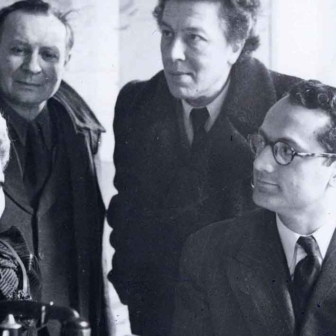Not so long ago, Australia had its history wars; now we have the statue wars. When the history wars were being fought in the early years of this century, they looked rather like that other “war” being fought at the time, the war on terror — a war without end.
The war on terror might still be with us, but the history wars — which were fought largely over the nature and extent of frontier violence — are over. They ended with a whimper rather than a bang, in exhaustion rather than with a treaty. One sign that they had lost their heat came in 2009, when Keith Windschuttle, arguably their chief protagonist, published the second volume of his trilogy purporting to reveal how the political left had fabricated Aboriginal history. Hardly anyone noticed.
The contrast with the storm caused by his first instalment was stark. Volume One of The Fabrication of Aboriginal History dealt with frontier violence in Tasmania, which Windschuttle claimed had been grossly exaggerated by historians. It attracted massive publicity in Australia and some attention abroad, with Windschuttle’s image of peaceful settlers, Aboriginal thieves and fibbing historians receiving powerful support from conservative politicians and the editors of the Australian and Quadrant.
Windschuttle’s second volume — oddly called Volume Three — attempted to demonstrate that the Stolen Generations were a myth. By this time, John Howard’s Coalition government had been defeated at the polls and Kevin Rudd had made his apology to those generations. The political wheel had turned. Australian neoconservatives were looking for other battles to fight, and they increasingly turned to global warming.
We’re still waiting for Windschuttle’s Volume Two. When one of the Australian’s editors, Nick Cater, published his book The Lucky Culture and the Rise of an Australian Ruling Class in 2013, I counted just five passing references to Australia’s Indigenous people. If Cater’s book was an accurate barometer of the preoccupations of the political right, the threat posed by environmentalists to Australian culture and Western civilisation had now eclipsed the preoccupations of the history wars.
Some commentators have proclaimed the recent debate over colonial monuments a revival of the history wars. But this framing seems to me quite misleading. Australia’s statue wars are not so much over what happened on the frontier as about how that past should be represented in public commemoration, and what kind of recognition, if any, monuments erected by settler society should give to Indigenous perspectives and experiences. It is a fundamental test of our pluralism, of our ability as a society to hold more than one idea in our collective heads at the same time. Being able to do that is arguably a precondition for living civilised and ethical lives in a settler society.
The Australian statue wars follow on from the South African and British Rhodes Must Fall campaigns and are entangled in the Change the Date campaign, but they were more directly triggered by recent violent conflict in the United States over Confederate statues. In this sense, the controversy is a measure of our Americanisation, as well as of the global nature of political contention in the age of social media and instant communication. Just as Australians have followed the events in the United States, overseas friends on Facebook are posting stories about Australian developments.
The debate really took off here after the ABC published a thoughtful and measured article by Stan Grant about how we might deal with the historical inaccuracies etched on a statue of Captain Cook in Sydney. Grant quickly and predictably became a target for the usual coterie of radio shock jocks and social media trolls for being an Indigenous man willing to express an opinion on a controversial matter. Adam Goodes will perhaps have smiled knowingly. Quadrant Online’s reporting of the matter carries the typically tacky headline “Stan Grant given a good tanning.”
Denialism will always be with us — some people still believe the moon landing was faked — but those defending colonial monuments don’t usually contend that Australia had a peaceful past, nor do they accuse historians who have suggested otherwise of telling fibs. That’s where we were fifteen years ago. The debate has moved on, partly because historians did what historians generally do best — carried out conscientious research in the primary sources — and partly because the political right lost interest. As a result, when my daughter learns about colonial history in primary school — or when I and my colleagues teach university students about Australian race relations — the story remains one characterised by violence and dispossession, as well as cooperation, friendship, love and much else that happens when two groups of human beings encounter one another in the real world.
The failure of Windschuttle and the Quadrant school to displace the dominant understandings of Australia’s colonial past helps explain the periodic panic on the right about the left’s supposed domination of the history curriculum in schools. Just last week, Tony Abbott complained that teaching more Indigenous history in schools — unless accompanied by his favourite subjects, British history and Western civilisation — would be “another capitulation to the left.” The Institute of Public Affairs also seems to have put one of its own bloodhounds to work on the matter. A few months ago, she had a go at my own course on Sexuality in Australian History, predictably ignoring those I teach on Anzac, and on political and economic history.
In a sense, historians were on a hiding to nothing in the history wars. Those on the right who wanted to offer a comforting narrative of a benign imperialism and peaceful settlement found it much easier to gain political patronage and media attention. The charge that left-wing historians had fabricated evidence for political reasons, however fabulous, was attractive to journalists and to many casual readers of the Murdoch press, whose prejudices about “the left,” “academics” and “intellectuals” were thereby confirmed.
But what of history as an “objective” truth-telling practice? How has its standing been affected by the transformations since the 1990s? In a perceptive discussion in his book The Art of Time Travel: Historians and Their Craft, Tom Griffiths argues that the very nature of the history wars — including their degeneration into a debate over body-counts and footnotes — meant that historians were seen as qualified to engage politically in a way that a novelist such as Kate Grenville, writing about similar things, could not. Historical fiction was not a genre suited to this kind of controversy because of the hyper-empirical — some might say, often pseudo-empirical — nature of the debate.
Yet history, at least as it is understood by most people who practise it in universities, wasn’t terribly well adapted to the nature of the controversy either. As academic historians embraced what Dipesh Chakrabarty has called a “politics of recognition” and discussed the “historical wounds” of marginalised social groups in their writings, they necessarily did so in a state of increasing uncertainty about what constituted “positive historical knowledge.” In the context of the belligerent attacks from the political right, historians’ emphases on contingency, uncertainty and imagination could look like special pleading. To insist on history as a humane political and literary discipline could translate in the public sphere into a confession that it was ideologically driven, left-leaning and essentially made-up.
The result of these changes may well have been a decline in the public standing of history. Here, the critical decade was probably the 1980s, with its ideological disputes over the impending bicentenary of British settlement being a notable early salient. This is a story of cultural battles conducted in ministers’ offices, government departments, and the pages of broadsheet newspapers and right-wing magazines.
But while these controversies unfolded, Australians were also engaging ever more intensively with their past — through genealogy, for example — and a quiet revolution was being made by archaeologists, anthropologists, environmentalists, historians, museologists, legal scholars, writers of historical fiction and travelogues, Aboriginal activists, writers and artists, curators and collectors of art, and the creators of popular music. The results would soon be evident in new ways of thinking about the history of Australia and the emergence of ideas about “deep time” and “big history.” Alongside this, the Mabo High Court decision of 1992 had initiated a revolution in jurisprudence and politics, influenced by the forms of knowledge and culture just mentioned, including history.
A resurgent political right could easily translate historians’ insistence on the uncertainty of historical knowledge and the creativity of their practice into the notion that historians — all left-leaning, of course — were using their history as a propaganda vehicle. The obvious point that historical interpretations change across time as more evidence comes to light and societal values alter — that history is, in a real sense, “rewritten” — came to be conflated in the rhetoric of conservative critics with relativism and postmodernism. They saw these vices as the currency of the fabled left-wing-dominated humanities departments.
In the midst of the latest war came a revealing contribution from Geoffrey Blainey, the man who in 1993 coined the phrase that would become one of the right’s weapons in the emerging history wars, “black armband history.” In view of the overblown rhetoric that has figured in the media over the past couple of weeks about “rewriting history,” left-wing “totalitarianism” and (a special contribution from prime minister Malcolm Turnbull) the equation of graffiti with “Stalinism,” it is notable that the Australian right’s favourite historian is not new to the business of altering monuments.
As Carolyn Holbrook reveals in her book Anzac: The Unauthorised Biography, Blainey was the inspiration behind a strange decision by the Australian War Memorial in 1999 to add a plaque to the tomb of the Unknown Soldier reading “Known unto God.” That decision was peculiar in several respects. The AWM, in line with the views of the figure so influential in its founding, Charles Bean, had long emphasised secular commemoration; the extra plaque was clearly outside that tradition. But there was also something very odd about providing a monument unveiled just six years earlier, yet already well on the way to becoming the nation’s premier site of civic memory and mourning, with a Christian gloss in a multicultural, multi-faith society in which formal Christian observance was on the wane — a trend that has continued ever since.
Blainey’s role in this matter has not discouraged him from weighing into the statue wars. In a long piece in the Australian, he accuses Grant of “enlarging on dubious statements in textbooks and some university lectures” and having “soared into fantasy.” The question of whether an inscription on a statue should be altered seems ultimately to depend on whose story is at stake. •




